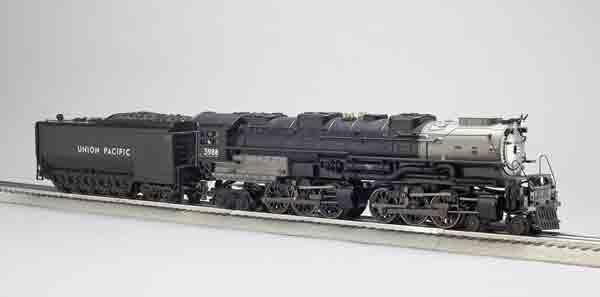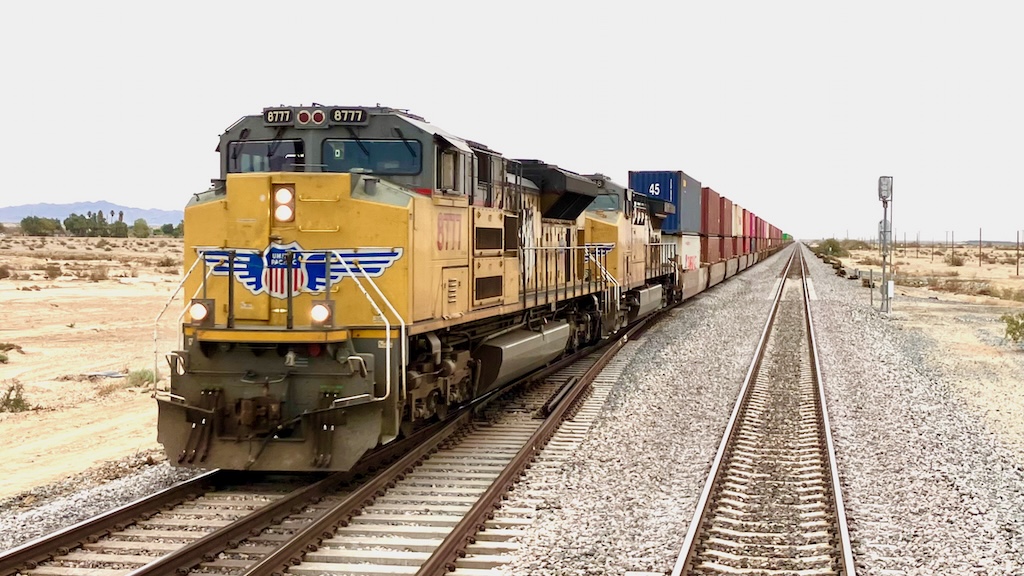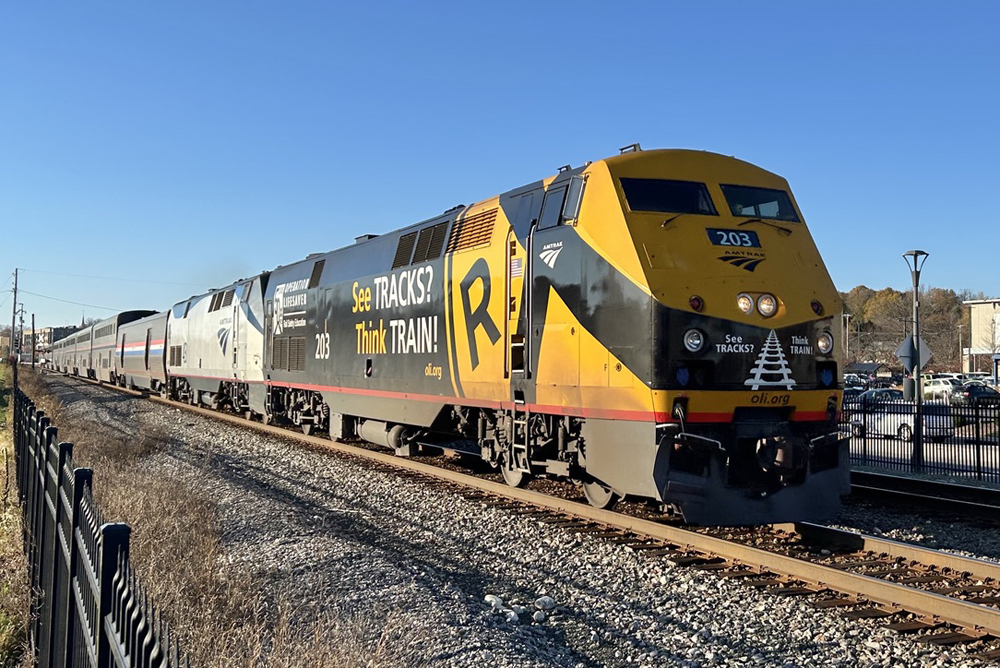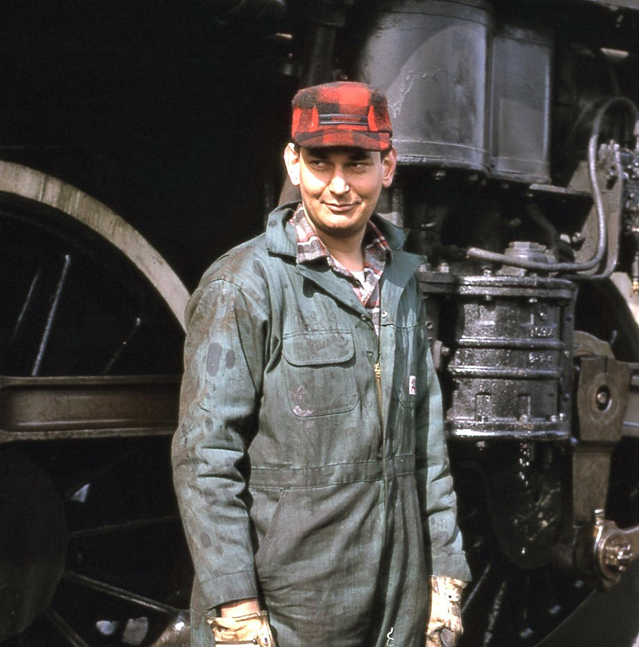Length: Frame 25½ inches
Die-cast metal construction
Smoke unit
Directional lighting
MTH ProtoSound 3.0 sound and command system
Coupler-to-coupler: 25½ inches
Two can-style motors
Accordingly, I was totally impressed that someone could compress the elements of this elegant Union Pacific locomotive to enable it to be operated on O-31 track. Some 18 years later and my “How about that!” feeling still rings true.
Over the years, we’ve seen many O gauge models of the Challenger. This was a classic design of the late steam era. Launched in 1936, the 4-6-6-4 was powerful and fast, so it performed well on the wide-open spaces of the Union Pacific, the mountains of the Denver & Rio Grande, and hilly terrain of the Delaware & Hudson.
The Union Pacific introduced the 4-6-6-4 in 1936 and ended up owning the largest and most famous fleet of Challengers. Designed as freight haulers, they were regularly used in high-speed passenger service. The line’s fleet operated well into the diesel era, with the last Challenger being dropped from the roster in 1962.
Though operated by nine railroads, just two Challengers (both Union Pacific) still exist: one in the UP’s steam operations program and the other on display in North Platte, Neb.
Opening the box
This MTH model is not a cheap, esthetically challenged locomotive. It has weight, it feels solidly constructed, and it has a huge number of the detail points you’d expect to find on a 1:48 scale model – just creatively compacted into a “sports model” of the classic 4-6-6-4.
Even for a compressed model, the pilot seemed a bit snub-nosed – not much, but maybe suggesting this was a sort of USRA Light Challenger … oh, that’s a joke. The USRA (U.S. Railroad Administration) was connected with World War I and not WWII. That being noted, the pilot mirrors the UP “cowcatcher,” complete with the seam for the swing-out front coupler (this is cosmetic and does not actually operate). There is a nicely detailed compressor shield with cast-in louvers and hinge detail.
There are grab irons on the pilot that leads up to a deck behind the compressor shield. On the model, a 1:48 scale crewman would bridge the gap to the running boards and additional handrails that run the length of the boiler. Positioned at the top center of the shield is a headlight with number boards. Above and behind it you’ll find a deck below the smokebox.
The smokebox has deep rivet and hatch detailing and a Union Pacific shield with the number 2988 in the center. There’s a grab iron above the shield, and the top has green classification lights and a bell in the center.
The smokebox is painted silver back to the first sand dome. Again, the model has clear cast-in rivet, seam, and conduit detailing. Small builder’s and trust plates are nice graphic elements added to the rig.
Boiler top detailing includes two sand domes and a steam dome, a whistle, a turbine, and pop-off valves.
The cab has non-opening windows, two crew figures, a decorated backhead with white gauge faces and red valve handles, and a bright firebox glow. Wire grab irons are placed at each corner of the cab.
Beneath the running board you’ll find a great maze of cast-in pipes and steam lines. The steam chests look a bit small. However, after taking a few steps back from the test track, I concluded they seemed to fit in pretty well with the overall compression of the model.
The silver-painted firebox is terrific. It has cast-in rivets galore as well as cast-in water lines. The silver paint does a wonderful job of highlighting this texture.
The tender is a little metal box with seven axles, pretty much like the real thing. The coal is a chunk-style load, not a cast-in load. There’s a great checkerboard of rivets to reinforce the notion this is a big, heavy-duty piece of equipment! There are steps on the front of the tender and on both sides of the rear of the car.
The rear of the tender had a red marker light and a white backup light. The latter remains off unless going in reverse.
Painting and decoration were great. We found no overspray spots, and all lines between colors (especially lettering) were clean and sharp.
On the test track
Firing this locomotive up, I was pleased with the deep, robust background sounds. The whistle is great, and evokes the mental image I associate with Mississippi River steamboats. The bell was satisfactory, but it tended to get overwhelmed by other sounds when the train was rolling along.
The model measures just more than 25 inches from front to rear. How does the model get that coveted O-31 dexterity? Simple – both sets of drivers pivot roughly from the 10 to 2 position on a clock. Very cool!
Performance was very good. Our command-mode low-speed average was 2.4 scale miles per hour, and the high-speed average was 63.6 scale miles per hour. Our conventional low-speed was 4.2 scale miles per hour.
Drawbar pull averaged at 1 pound, 8 ounces. However, it peaked at more than 2 pounds several times during testing.
The wireless drawbar snapped easily in place. Once connected, it requires a bit of effort to disconnect, so you’ll have no worries about hooking it up wrong or it popping out.
In a one-off oddity (the only other MTH product to do this was the Premier line Turbotrain we tested) the Challenger didn’t load through the normal Engine/Menu/Engine Set Up sequence. It did, however, load when I depressed the “Read” button on the Digital Command System controller. It interrogated the track and found it, loading it as the 20th engine on the list.
The smoke unit was potent in output. It had a white haze floating over our workshop in no time.
Motor operation was smooth, and it was pleasant to watch the side rod action, especially at lower speeds.
The RailKing Imperial Challenger is a great success at offering super-powered steam locomotion for operators with O-31 layouts and a fleet of traditionally sized freight or passenger cars. It provides great performance in a compact body and boasts features right up there with MTH Premier line equipment. If you’ve wanted big steam for a compact layout, this 4-6-6-4 is right up your alley.















Video is here:
http://ctt.trains.com/videos/product-reviews/2015/01/mth-4-6-6-0-challenger-locomotive
Sorry for the delay!
How do I find the action video you promised
The magazine promises a video of the engine in action; I haven't been able to find it yet. Looks beautiful though – hope a D&H version will show up sometime.